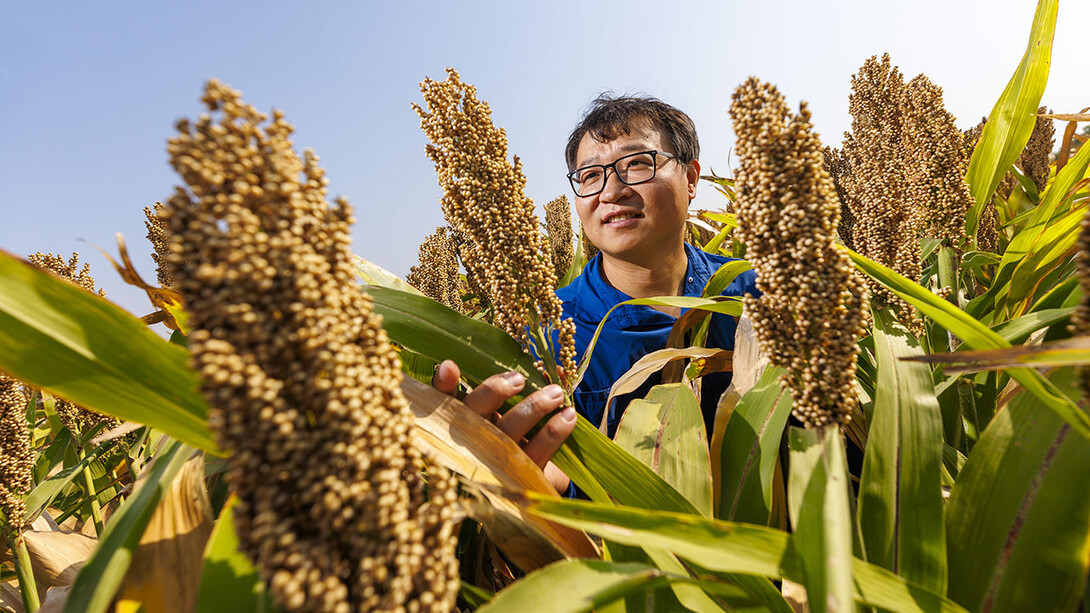
A University of Nebraska–Lincoln scientist is leading a multi-institutional effort to better understand sorghum’s genetic makeup in a quest to improve the crop’s nitrogen use efficiency.
Jinliang Yang, assistant professor of agronomy and horticulture, leads a three-year, $2.7 million project that includes other Husker scientists as well as collaborators at Kansas State University and the Alabama-based HudsonAlpha Institute for Biotechnology. The multidisciplinary project is funded by a grant from the U.S. Department of Energy.
Increases in the price of nitrogen fertilizer and the environmental impact of fertilizer runoff on ecosystems have driven extensive research into increasing sorghum’s fertilizer use efficiency. That research, at Nebraska and other institutions, has helped scientists answer questions around nitrogen’s assimilation, transport, and reallocation processes. Studies have identified specialized nitrate transporters and sensors, helping scientists characterize the nitrogen mobilization process, all with an eye toward helping the crop use nitrogen as efficiently as possible and reducing fertilizer use. One-third of the sorghum grown in the U.S. is used for livestock feed, and it’s also a popular food crop in areas of Asia and Africa.
This new research also will focus on other aspects of sorghum’s fertilizer use, including nitrogen sensing, signaling and downstream regulatory pathways.
Scientists have previously characterized a number of sorghum genes that appear to have a role in managing nitrogen. They have edited those genes using the CRISPR-Cas9 process — a technology that allows scientists to find a specific piece of DNA inside a cell and then alter that DNA. The new project will enable the Nebraska-led team to further characterize those edited genes phenotypically and molecularly.
In addition, scientists will edit a second set of nitrogen-responsive genes and characterize them through the high-throughput phenotyping system at Nebraska, ultimately leading to field testing. These genes may play an essential role as nitrogen sensors. Finally, the project will fund generation of population-scale gene expression datasets.
“The overall goal is to try to improve nitrogen use efficiency,” Yang said. “We would like to understand better the genetic functions of the crop’s individual genes and then piece them together as a complex network.”
Eventually, the most promising sorghum variations will be tested in agricultural fields in Nebraska.
Yang’s Nebraska collaborators include Thomas Clemente, Eugene W. Price Distinguished Professor of biotechnology; Yufeng Ge, Harold W. Eberhard Distinguished Professor of biological systems engineering; and James Schnable, Charles O. Gardner Professor of Agronomy.








